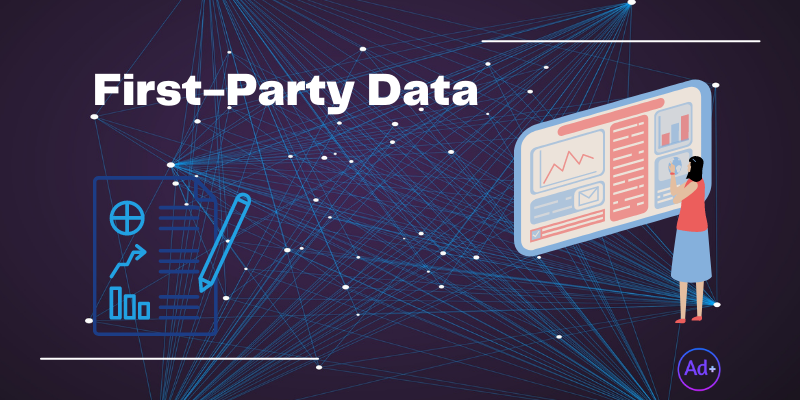First-Party Data
What Is First Party data and How Publishers Can Use 1st Party Data to Monetize Their Inventory.

First party data refers to the information collected by a company directly from its own customers or website visitors. This data can come from various sources such as website analytics, customer relationship management (CRM) systems, and other data-gathering tools. Unlike third party data, which is collected by external companies and then sold to marketers, first party data is owned by the company and is considered to be more valuable because it is more accurate and relevant to the business.
The Importance of First Party Data for Publishers
For publishers, first party data is a valuable asset that can help them better understand their audience and improve their ability to monetize their inventory. By collecting and analyzing data about their audience, publishers can gain insights into their audience's interests, behaviors, and preferences. This information can then be used to inform content creation, target advertising, and optimize the user experience on their websites.
Using First Party Data to Monetize Inventory
There are several ways that publishers can use first party data to monetize their inventory and increase revenue. Here are some of the most effective strategies:
1. Targeted Advertising
One of the most effective ways to monetize inventory using first party data is through targeted advertising. By using data about their audience's interests and behaviors, publishers can target their advertising efforts to the right people, at the right time, with the right message. This can lead to higher engagement rates and higher conversion rates, which in turn can result in more revenue for the publisher.
2. Audience Segmentation
Another way to monetize inventory using first party data is through audience segmentation. This involves dividing a publisher's audience into smaller groups based on shared characteristics, such as age, gender, location, or interests. This information can then be used to deliver tailored content and advertising to each group, which can help increase engagement and revenue.
3. Personalized Content
Personalized content is another way that publishers can use first party data to monetize their inventory. By using data about their audience's interests and behaviors, publishers can create and deliver content that is relevant and appealing to each individual reader. This can help increase engagement and keep readers coming back to the site, which can result in more opportunities for monetization.
4. Data-Driven Content Creation
Another way that publishers can use first party data to monetize their inventory is by using it to inform content creation. By analyzing data about what types of content are most popular with their audience, publishers can create content that is more likely to resonate with readers and drive engagement. This can help increase traffic to the site, which can then be monetized through targeted advertising and other revenue-generating initiatives.
Tips for Maximizing the Value of First Party Data
In order to maximize the value of first party data, publishers need to be strategic in how they collect and use it. Here are some tips for doing so:
1. Make Data Collection a Priority
One of the most important things that publishers can do to maximize the value of their first party data is to make data collection a priority. This means investing in tools and technologies that can help gather and analyze data, as well as putting processes in place to ensure that data is collected consistently and accurately.
2. Use Data to Improve the User Experience
Another way to maximize the value of first party data is to use it to improve the user experience. By analyzing data about what types of content and features are most popular with their audience, publishers can create a website that is more user-friendly and engaging. This can help increase traffic, engagement, and revenue.
3. Keep Data Fresh and Up-to-Date
In order for first party data to be valuable, it needs to be fresh and up-to-date. This means regularly collecting and updating data about your audience, as well as storing it in a secure and accessible format. By doing so, publishers can ensure that they are using the most current information when making decisions about how to monetize their inventory.
4. Use Multiple Data Sources
In order to get a complete picture of their audience, publishers should use multiple data sources. This can include website analytics, customer relationship management (CRM) systems, and other data-gathering tools. By combining data from multiple sources, publishers can get a more comprehensive understanding of their audience, which can help inform their monetization efforts.
5. Work with Data-Driven Partners
Finally, publishers can maximize the value of their first party data by working with data-driven partners. This can include advertising networks, data management platforms (DMPs), and other companies that specialize in using data to inform marketing and advertising decisions. By working with these types of partners, publishers can access additional data and insights that can help improve their ability to monetize their inventory.
Conclusion
First party data is a valuable asset for publishers, and by using it to inform their monetization efforts, they can increase their revenue and improve their ability to engage with their audience. Whether it's through targeted advertising, audience segmentation, personalized content, or other strategies, publishers can use first party data to create more effective marketing and advertising campaigns. By being strategic in their data collection and use, publishers can maximize the value of their first party data and achieve their monetization goals.
